Note: We visited Euskalduna Studio in May of 2017, and in the meantime we needed to go to the Basque Country, as well as learning a few more things, before finally writing our love letter.
I’m sure it’s possible to write about Euskalduna Studio, Porto’s most exciting novice restaurant, without mentioning a single dish. The experience lived in this space transcends any dish or drink that may be served. The story starts way before opening the door, through the meticulous planning of a unique gastronomic and sensory experience. The experience in itself can be described as an extreme state of enthusiasm, curiosity and learning. But not talking about the food is unfair, as we shouldn’t evict it from its home.
Somewhere in the midst of the long Rua de Santo Ildefonso stands the door of Euskalduna Studio. Behind the private folding screen is a discreet but warm space, surrounded by wood from the walls to the floor. The long stone counter, however, pops out. Let’s not beat around the bush: the counter is the place where you should enjoy your meal. Why? Because a show should be seen from the front row. The proximity to the kitchen creates a sort of intimacy with the open containers, the trips to the grill, the pouring of the sauce, the assembly of the dish. This is all quite educational, as nothing magically appears in front of you.

The approach begins when you’re asked whether you want your menu facing up or down. If you decide to keep your menu facing down, then you’ve decided to enter the tasting menu blindfolded. Otherwise, if you want it facing up, you get to choose the dishes you want. We chose the first option. Additionally, you may choose to harmonize your food with a tasting composed of either wines, beers or teas. In case you’re a party of two and share several things in life, then why not share glasses and ask for two different harmonizations.
After the dish is born in front of you, a detailed and animated tour of the course in regard to its provenance and confection is quickly performed. The tuna they brought from the Azores islands, or the temperature at which the cured egg yolk was cooked, for instance. The more than evident quest for the foremost ingredients one can find in this land says a lot about what you’re about to taste.
When you’re about to reach your third spoonful, more or less, someone is bound to ask you if everything is going smoothly. This humility was an ingredient that accompanied all of our meal, and we later came to know that this curious restlessness was personified by the owner and chef, Vasco Coelho Santos. Chef Vasco and his united and diligent team were tireless in providing a unique and intimate atmosphere with food, that was also relaxed and uncomplicated. There is space for questions and answers of all kinds.
So let’s get started about the food.

#1 - sablé, pancetta and corvina
A fine sablé, covered with a layer of finely chopped corvina and complemented by a thin strip of pancetta, arrived at our counter. This composition reminded us of the classic Navarra dish of trout with ham. The cheese sablé was the umami element that contrasted with the corvina’s freshness and the pancetta’s unctuosity, which in spite of being in clear numeric disadvantage, prolonged all the flavors.

#2 - chervil and pickle
The chervil root benefitted from a confection that rendered it wonderfully sweet, with a slight anise flavor and the consistency of a puré. The acidity of the chervil pickle balanced perfectly with the sweetness of its counterpart. In sum, a comforting delicacy.

#3 - dashi
Dashi is a Japanese broth which is simple, limpid and rich in umami. The basis of this dish is a broth made from katsuobushi, a piece of fermented and dried tuna belly. This block of fish disguised as wood is promptly handed to you so that you can appreciate it’s oddity and marvelous aroma. Apart from the broth’s purity and simplicity, there were also other elements in the mix, such as the salty glasswort. However, the most prominent ingredient was undoubtedly the creamy egg yolk that floated in the broth. Its semi-solid consistency enabled it to melt slowly into the dashi. This result was achieved by cooking the yolk at low temperature and curing it in sugar. It was, without a doubt, one of the best eggs we’ve ever tasted.
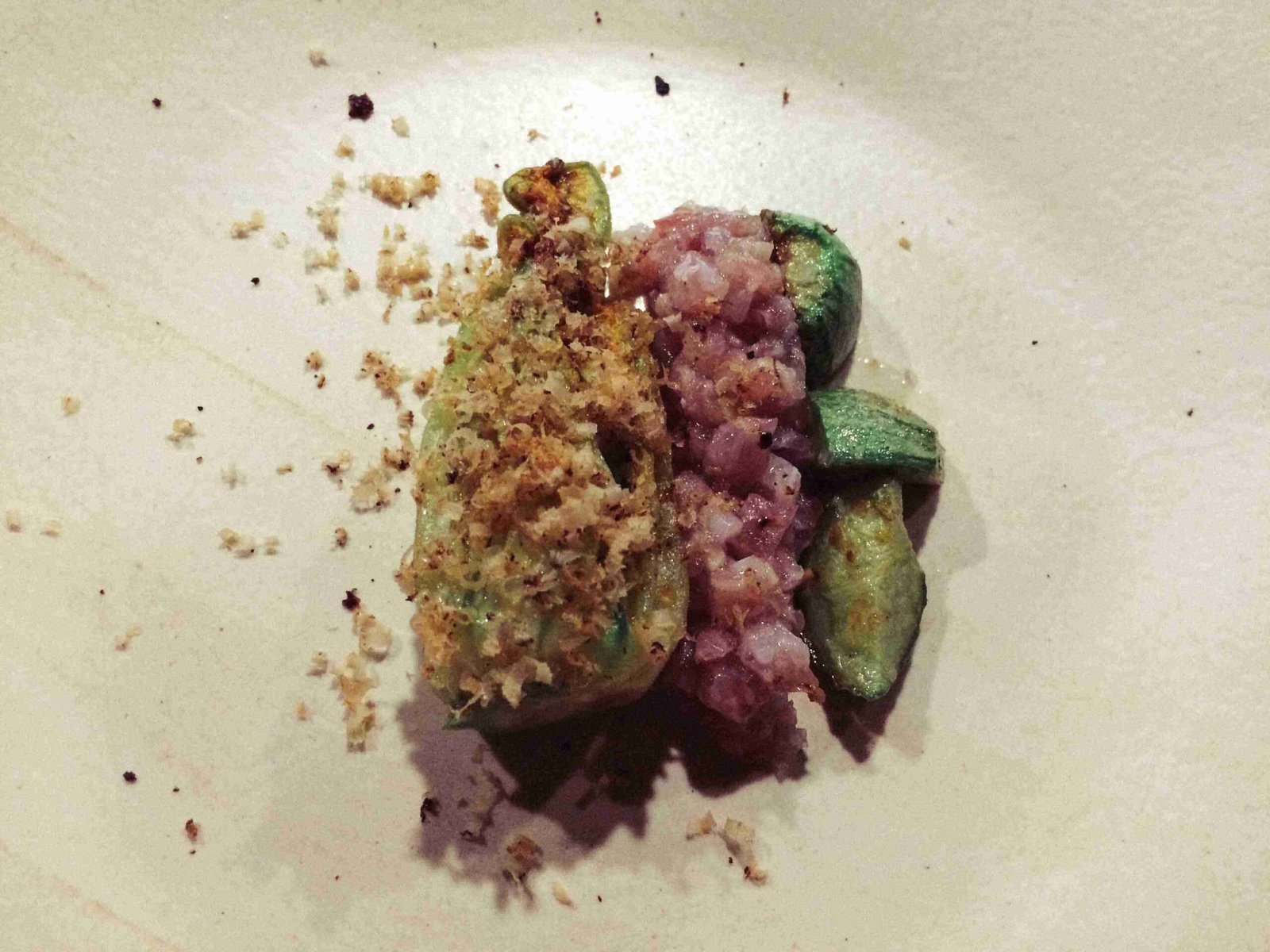
#4 - chopped tuna, courgette flower and fruit
Then came another magnificent dish, in the shape of a chopped tuna belly, sided by a stuffed courgette flower and sautéed courgette (fruit). The tuna belly – of exceptional quality – came directly from the island of Pico, in the Azores. Chef Vasco, always intrepid in the search for the best ingredients, had personally traveled to the Azores to quarter the majestic tuna. This is the sole explanation for the tuna’s unmatched freshness and unctuosity, which was sublime. The courgette flower was filled with fresh, well-seasoned kimchi prepared in the house (as expected), and sprinkled with toasted macadamia nut. The rounder flavors of the dish like the tuna and courgette were very well contrasted by the spicy, but balanced kimchi.
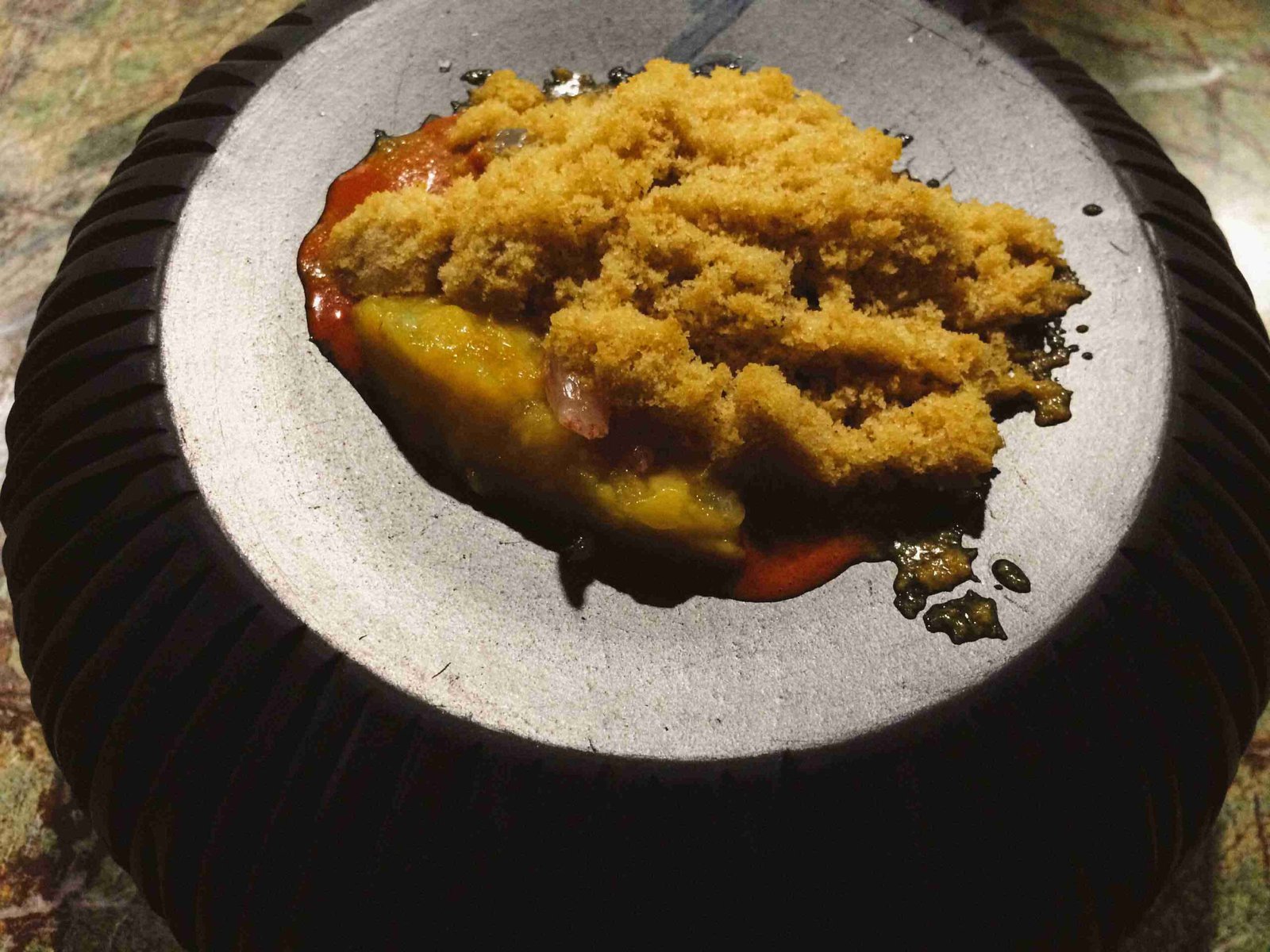
#5 - prawn, scarlet shrimp and curry
Hence we arrive at the night’s most controversial dish, and upon which no consensus was achieved. The curry was deconstructed into 4 layers, based upon on a cream of scarlet shrimp heads, topped with raw Algarve prawns, a mango chutney, and an ice-cold curry – totally frozen. The dish was accompanied by a hot turmeric infusion. The sheer freshness of the raw prawn gave it a firm texture, that was necessary as a base for everything that surrounded it. The intense seafood flavor was due in large part to the excellent scarlet shrimp cream. Moreover, the aroma and sweetness of the mango chutney brought some sensory exotism to the plate. The curry itself was removed from an icy container and deposited over the remaining ingredients. The debate begins here: does it freeze the tastebuds and delay the assimilation of flavors? Or does the contradictory temperature regarding what you would expect from a curry, combined with the freshness of the seafood, make perfect sense? It’s to each, his own. One thing is granted: it’s a bold and ingenious dish and deserves a second try.

#6 - mullet, escabeche and jus
Mullet is usually very discriminated, but the fish one that is presented for consumption actually comes from the high sea. The mullet that fell in our plate was undoubtedly fresh, and its flesh, resembling sea bass, but fattier and meatier, was positively underdone, thus enhancing the taste. The onion escabeche, as well as the carrots and the appetizing jus, made the flavors familiar and comforting.
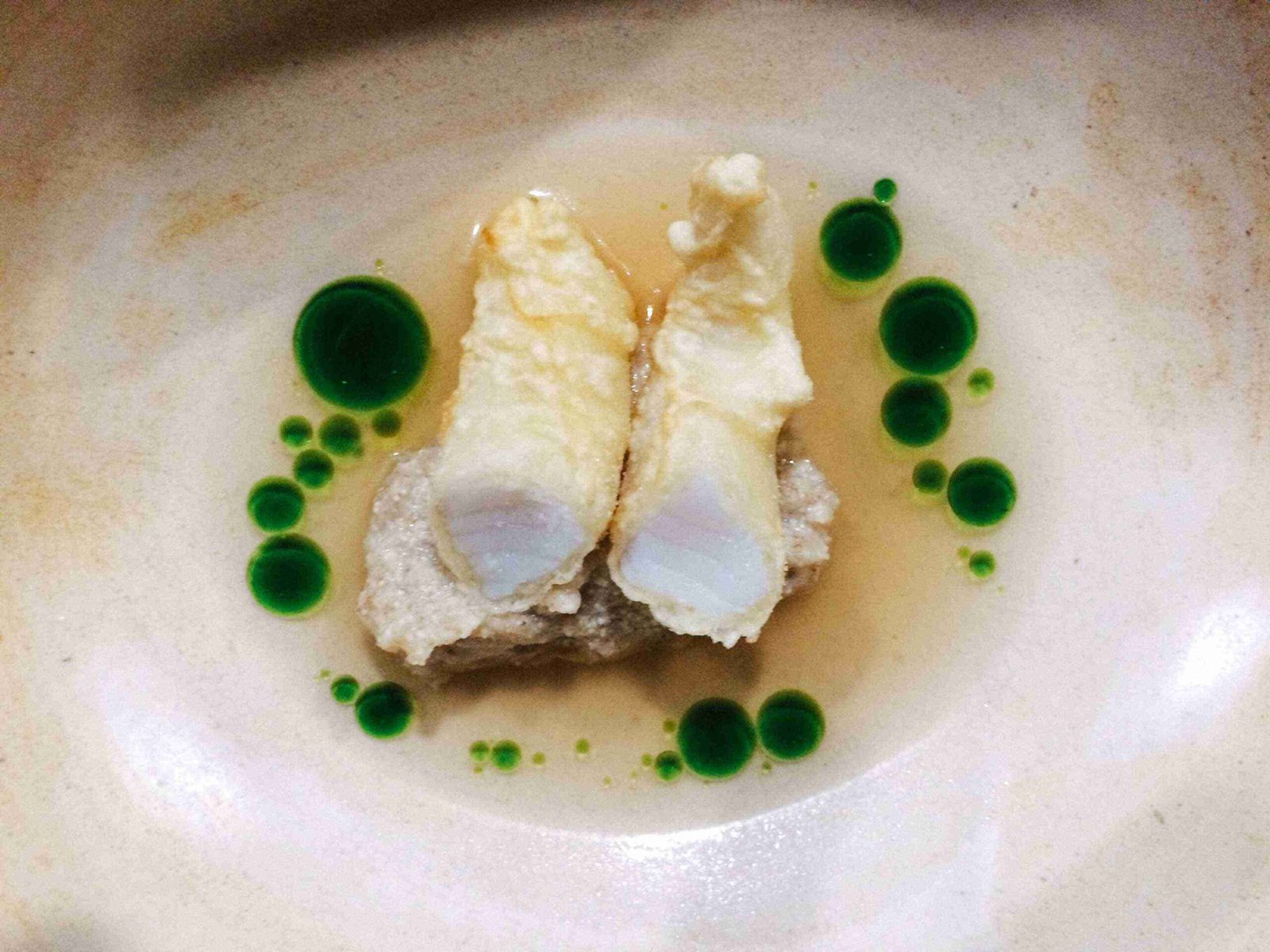
#7 - john dory and roe açorda
Inspired in the typical roe açorda (a sort of bread soup) and fried John Dory that is served in many restaurants along the coast of Matosinhos, this was one of the menu’s best-presented dishes. The delicate and halved John Dory fillet rested in the middle of a clear broth that tasted like the sea, and even had its own current, causing small, restless green droplets to hover like drifting seaweed. The drops were in fact just simple and tasty coriander oil. The roe açorda had a fabulous sandy consistency that only tiny and brittle eggs can achieve. The marine taste was prevalent, complemented by the well-fried John Dory, with a firm texture and delicate flavor.
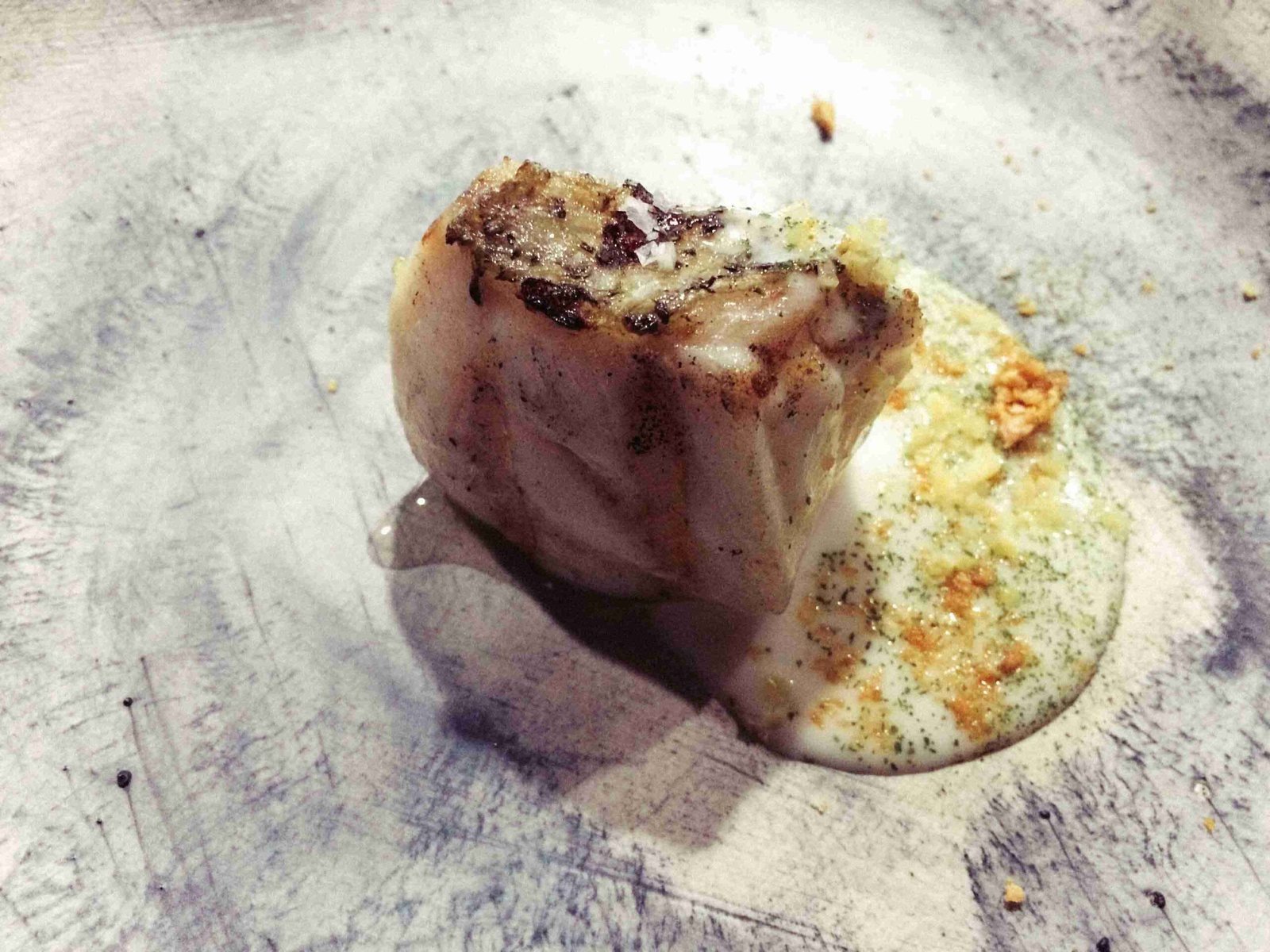
#8 - triggerfish, garlic and ox
Then came the moment of the triggerfish, a very curious fish that snorts, and with little expression in Portuguese gastronomy. We were served a tall, tender piece, expertly grilled in a Kamado, crispy skin up. The fish’s buttery flavor was well paired with the almost gelatinous and quite delicate ox knee sauce and sprinkled with pungent fried garlic.
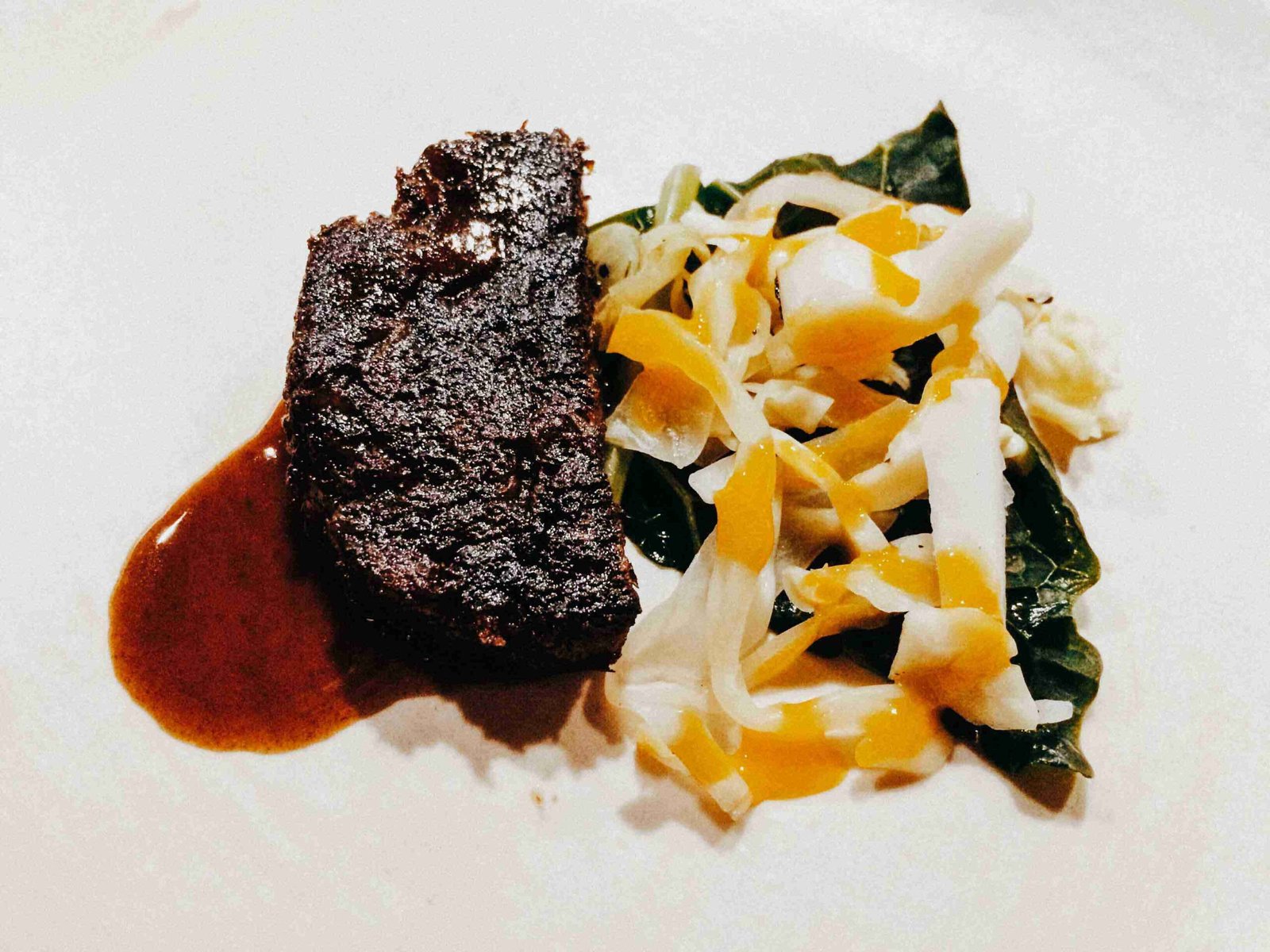
#9 - oxtail and cabbage
The oxtail sat in a pot for many an hour and was then shredded and reconstituted. Thus, it presented itself with an absurd tenderness. All those wonderful rich and roasted flavors appeared, with the caramelization of the meat’s components, the reduction of the wine and vegetables, and even some smoky flavor of unknown origin. The oxtail was sided by two different cabbages, differing in both texture and flavor, and doused in egg yolk sauce. The cabbages, however, didn’t provide as interesting a contribute as their animal counterpart.

#10 - veal, garlic and salsify
Meat maturation is a rather long process (in this case, 45 days), which results in a significant loss of water and the concentration of flavor. During this period the muscle enzymes wake up to their role and degrade proteins, glycogen, fats and other components, thus making the meat much softer, and above all, tastier. The meat was perfectly and efficiently grilled, highlighting the excellent texture and characteristic caramelization of the exterior. Perhaps the meat itself needed to be more marbled to accentuate the work of maturation, something difficult when it comes to veal. The salsify, a root that integrates ancient Portuguese recipe books, and which I’d never tasted before, was perfectly integrated into the dish. The exterior was almost scorched and the inside rich and creamy, expressing its natural nutty flavor.
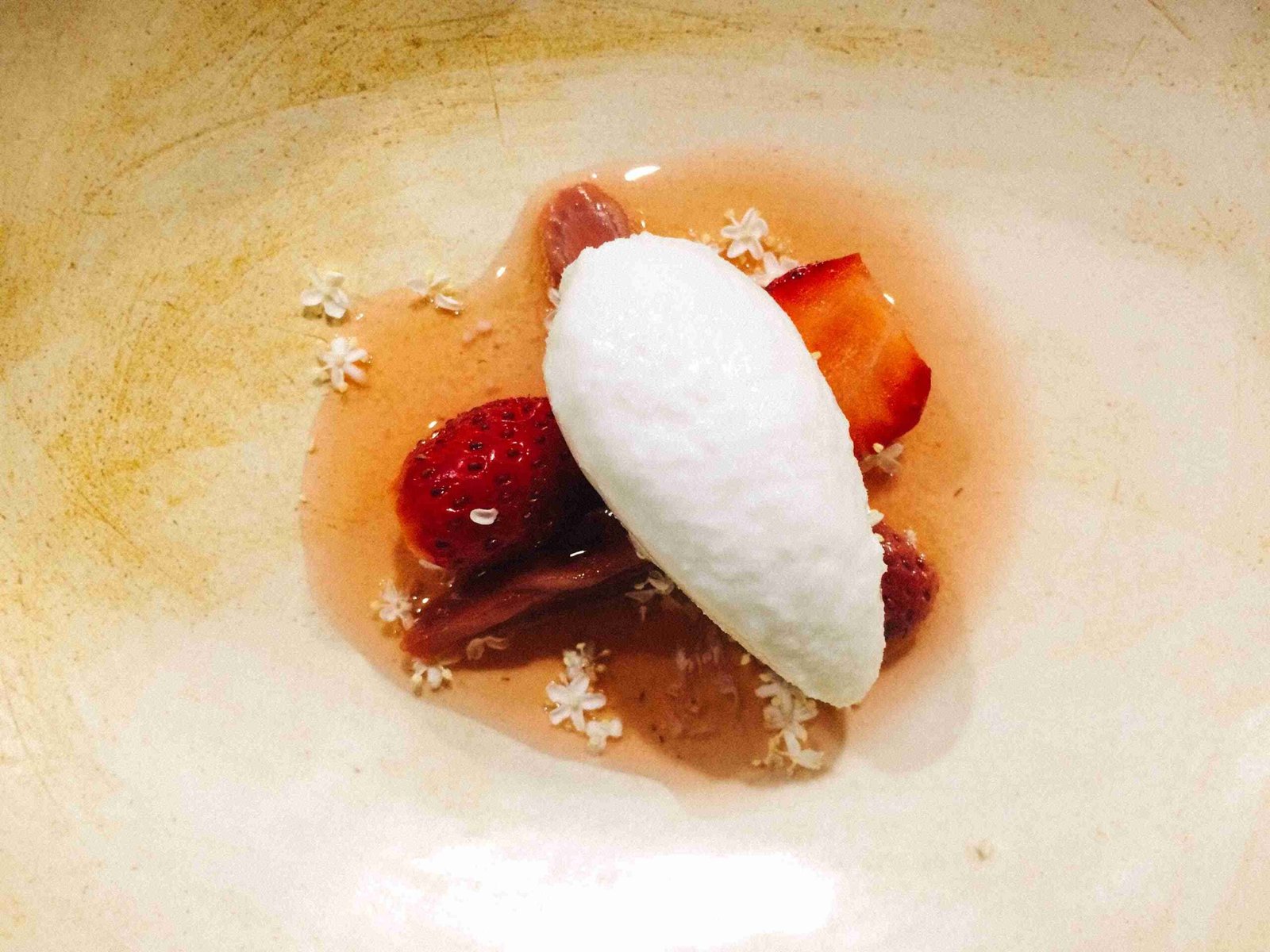
#11 - strawberry and elderflower
To close the round of savory dishes, then came a dessert in the form of a quenelle of elderflower ice cream, resting upon strawberries prepared in three ways. We then had an in-season fresh strawberry, fragrant and sweet, strawberry pickle and fermented strawberry. The latter two preparations were in fact very contrasting with what is expected of a fresh strawberry. The undergone processes brought not only a change in the fruit’s texture by softening it, but also a transformation of sweet into sour, and perhaps a little acidic, which came out as a little strange, probably due to the novelty. All in all, the strawberries made a worthy companion to the elderflower ice cream, which in itself could be the dessert: light, creamy and very aromatic.
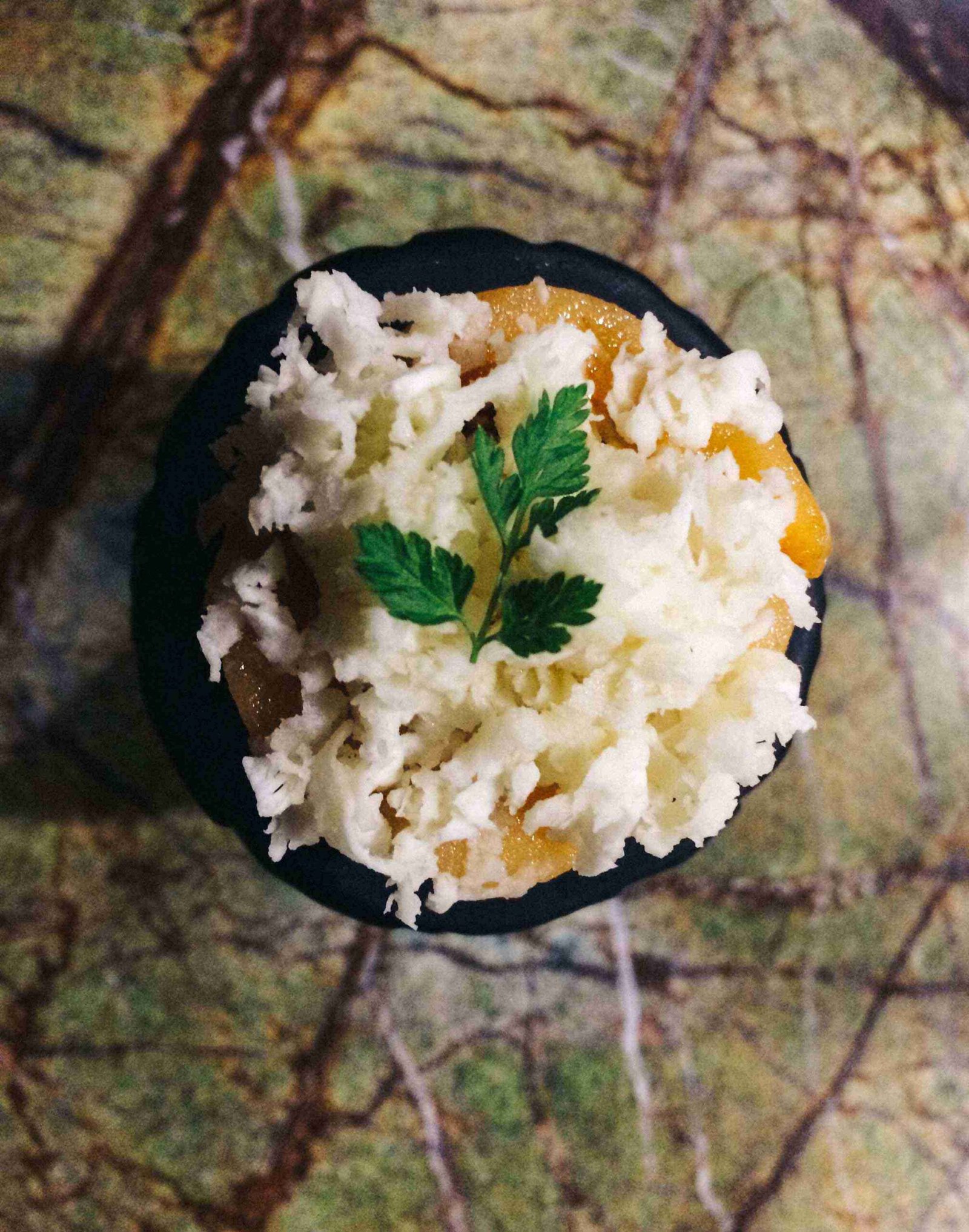
#12 - loquat and chervil
Simplicity should always have a place at the table, even at a restaurant like Euskalduna Studio. And the season brought another surprise. In a black ceramic log, appeared a plain and peeled half loquat, sprinkled with subtle shavings of chervil root. The perfectly ripe loquat was sweet and somewhat spicy, tamed by flakes of raw, sweet chervil root. A simple moment born from an unlikely marriage, for future memory.
We left happily inebriated and thinking how therapeutic a dinner can actually be. You can clearly see what they’re trying to do inside these walls, and we’re certain that the Euskalduna Studio’s team will soon grasp a beloved Michelin star, claiming its space as – although it already is – one of the best restaurants in Porto and Portugal.
Euskalduna Studio
Rua de Santo Ildefonso, nº 404
+351 935 335 301
www.euskaldunastudio.pt
Tasting menu ( 10 moments and some surprises): 80€

